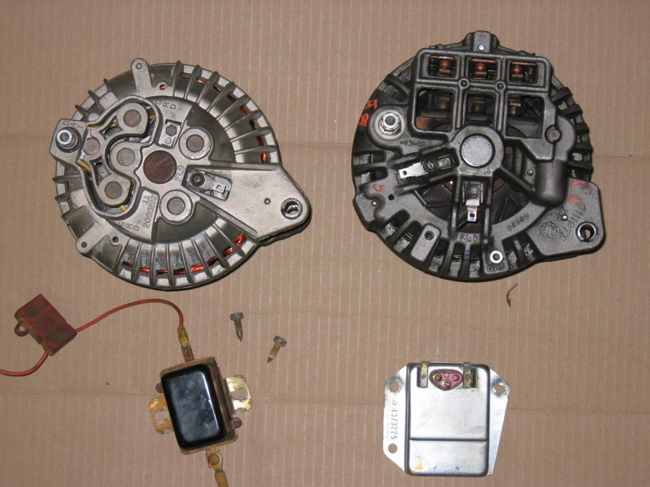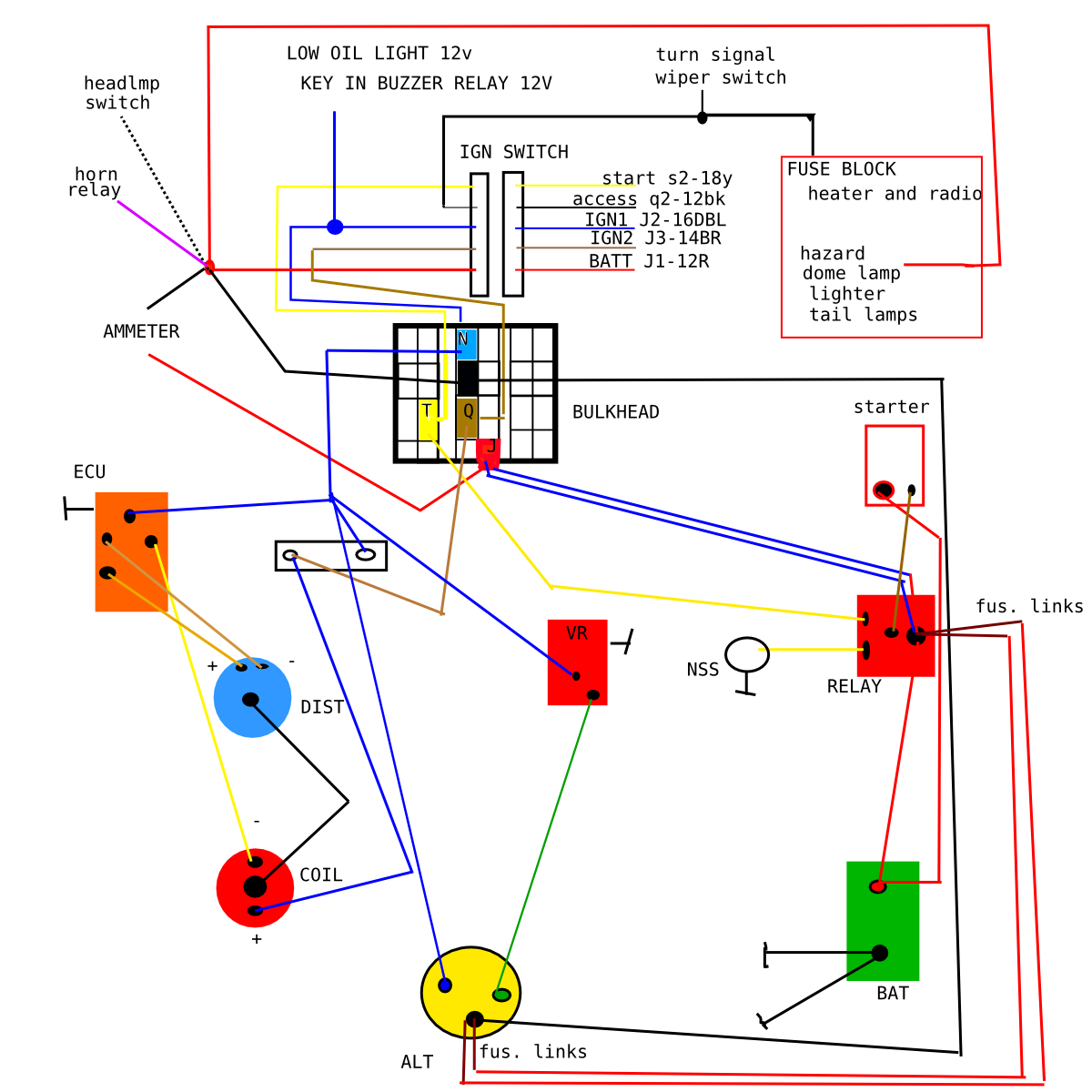Quote:
A picture of the alternator connections would help, but the wiring sounds correct. The unused hole marked GRND is probably just a threaded hole for a ground wire, which is a good idea to have.
The dark wires on FLD and at the regulator should be Blue and they join together in the harness, they should have 12 volts switched by the ignition.
The green wire from the regulator should indeed go to the field ground on the alternator, which should not be grounded to the case. You can test that with an OHM meter, remove both field wires and meeter between them and the case, you should see infinet or open on the meter.
Again, the wiring sounds fine it is just the type of connectors you are describing that sound a bit off, a picture would prove them.
The melted battery connection might have just been a loose connection, or it could have been caused by a bad diode or reversed booster cable connection. It should not have been caused by shorting a gauge lead.
Here is a simple video that will show the connections and a simple way to prove that the alternator is working and test the connections. Make sure you only do the test momentarily, and I use the regulator body for ground to prove that it is grounded as well. The regulator ground is important and should really have an extra wire to ground it and the alternator together.
http://youtu.be/ZzBbpTtVF-4
Well that's good news I think. I'll do some tests later. If this really is a 'dual field' alternator then maybe I don't have to buy a new one.The dark wires on FLD and at the regulator should be Blue and they join together in the harness, they should have 12 volts switched by the ignition.
The green wire from the regulator should indeed go to the field ground on the alternator, which should not be grounded to the case. You can test that with an OHM meter, remove both field wires and meeter between them and the case, you should see infinet or open on the meter.
Again, the wiring sounds fine it is just the type of connectors you are describing that sound a bit off, a picture would prove them.
The melted battery connection might have just been a loose connection, or it could have been caused by a bad diode or reversed booster cable connection. It should not have been caused by shorting a gauge lead.
Here is a simple video that will show the connections and a simple way to prove that the alternator is working and test the connections. Make sure you only do the test momentarily, and I use the regulator body for ground to prove that it is grounded as well. The regulator ground is important and should really have an extra wire to ground it and the alternator together.
http://youtu.be/ZzBbpTtVF-4
Sorry for the darkness and bad angle, but this is the best pic I have at the moment.

The connectors are the same kind used in these 2 alts, so perfectly normal.

